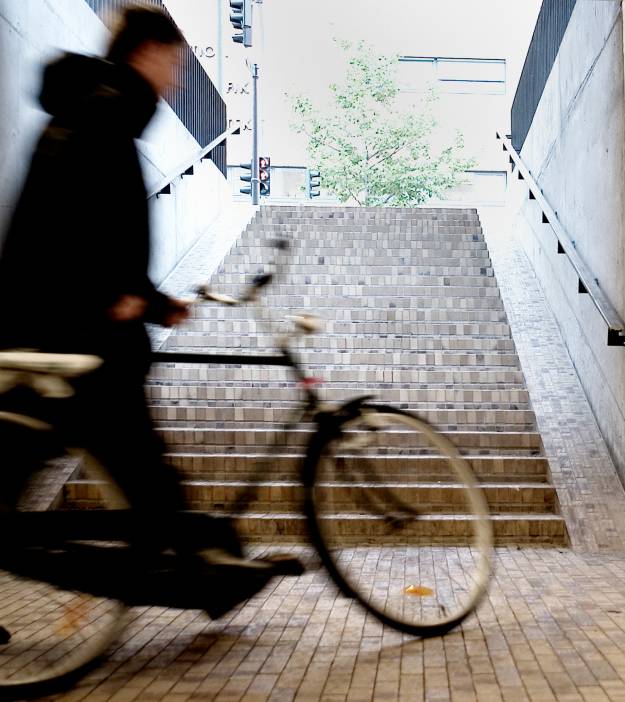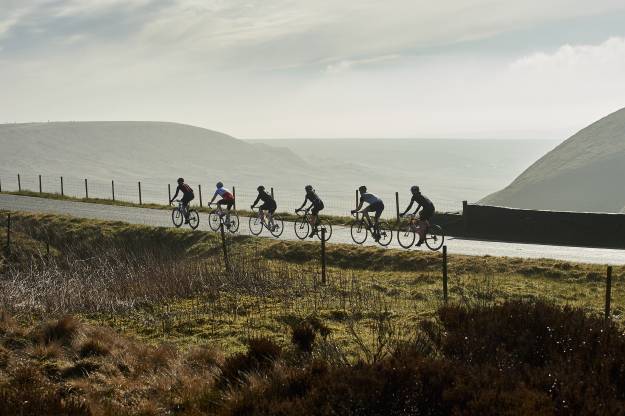In the second part of our blog series on recent changes to the Highway Code, our Policy Manager Nick Chamberlin celebrates the success of our Turning the Corner campaign, which we launched back in 2016 to improve junction safety.
We first launched our Turning the Corner campaign in December 2016, in a bid to address the single most dangerous places for people walking, wheeling or cycling on our streets – junctions.
Figures show that two-thirds of all traffic accidents happen around junctions, and we know that just the thought of cycling through these intimidating spaces is enough to deter people from cycling altogether. Our Turning the Corner campaign had a very simple ask – for a universal rule to give way to others going straight ahead when turning.
How we did it?
Our campaign was based on research by transport planning consultant Phil Jones, who identified a number of conflicting rules relating to junctions in the Highway Code. Our campaign for greater clarity and changes to the code started with a petition, signed by 27,000 people and delivered by hand to the Department for Transport by our Policy Adviser Chris Boardman.
You can read more on the development of the campaign from Phil Jones here, and a Q&A with Chris Boardman here.
Following the petition, more than 5,000 people went on to email their MP to ask them to support the proposed changes in Parliament.
So, what has changed?
In the revision of rules 2, 3 and 76, and the new rule H3 we now have wording that is robust, unambiguous and clearly explains the need for people driving to give way to those walking, wheeling or cycling who are going straight on or crossing a junction, when they (the driver) want to turn.
The code clarifies that when people cycling are going straight ahead at a junction, they have priority over traffic waiting to turn into or out of a side road, unless road signs or markings indicate otherwise.
While there has been a lot of commentary on these changes, including concerns that drivers in busy cities will feel trapped on the road with people cycling whizzing down the inside and outside of them, none of the evidence from countries with similarly simple laws regarding junction priority encounter such problems. Indeed, the rule works so well that only two countries in the world don’t employ it!
Do some people who cycle do so dangerously and without due regard for others? Yes, and many of us will have witnessed that behaviour and been disappointed when we see it. Crucially however, only on extremely rare and tragic occasions, does that behaviour result in harm coming to another person. People driving and cutting up someone cycling is the cause of many terrible and life-changing incidents each week, and according to research by Dr Rachel Aldred, 25 near-misses for regular cyclists every year.
One of the questions we were asked a lot during the consultation was how giving priority to people walking or wheeling across a junction mouth might endanger a person cycling. I do not believe that this change does anything other than reflect what all responsible and empathetic people already do while cycling.
Treating other people with the sort of respect, that we wish more people driving gave to us when we cycle, should simply be normal behaviour in my view.

What next?
Put simply, words in a well-meaning Government guidance document alone will not keep you safe on the road, and I encourage anyone who cycles to remain vigilant and cautious particularly in busy areas.
Over time however this change in junction priority will change how people are taught to drive and how our roads are policed, especially with the increasing use of personal cameras to capture and report dangerous driving and the acceptance of that evidence by police forces.
The changes to the Highway Code were only one part of the ambition within the Turning the Corner campaignm. We have still to pursue change to Traffic Signs Regulations & General Directions (TSRGD) and changes to Primary Legislation, and we will keep working with other stakeholders to press the Government for the changes to our roads and our laws that will keep everyone safe when they choose to cycle.
Please read the new code, understand it, and feel free to get in touch if there’s anything more you’d like to know.
Thank you!
The support of our members over the past five years has been absolutely vital in helping us to drive the campaign forwards and secure the necessary changes in the Highway Code. Change doesn’t happen overnight, but with your backing we’ll continue to push for safer spaces to cycle in our communities.
To get in touch with campaigning ideas, email choosecycling@britishcycling.org.uk, and support our work by becoming a member today from just £26.












